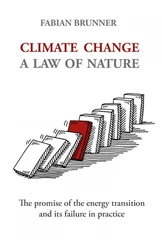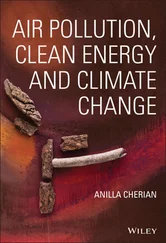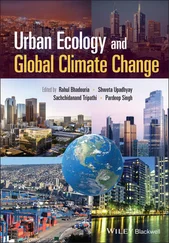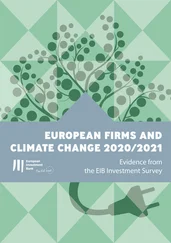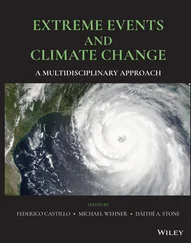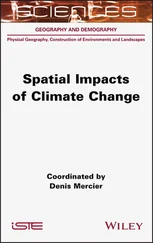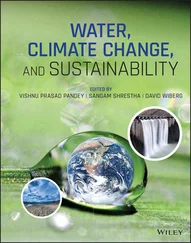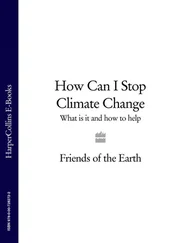In addition to the warming impact, as carbon dioxide mixes in the top layers of ocean water, the oceans are getting more acidic. Carbon dioxide mixing with ocean water makes a chemical change to carbonic acid. Carbon dioxide is less soluble in warm water, so the acidification of oceans is worse in the colder regions, and this trend is super worrying. The increasingly acidic ocean makes it harder for sea creatures that live in shells to form those shells. Where Elizabeth and John live on Vancouver Island, aquaculture operations growing oysters and scallops have had to move the early stages of growing shells to the warmer waters of Hawaii, to then transport the scallops and oysters back to Vancouver Island’s colder waters to reach maturity. This increased acidity is measurable. In 2021, the oceans are 25 percent more acidic than in 1900.
 Sinks normally absorb about half of human-caused emissions. So, if these sinks were to weaken, or even stop absorbing, they’d leave a lot more carbon dioxide in the atmosphere, on top of our already-increasing emissions.
Sinks normally absorb about half of human-caused emissions. So, if these sinks were to weaken, or even stop absorbing, they’d leave a lot more carbon dioxide in the atmosphere, on top of our already-increasing emissions.
Checking Out the Other GHGs
Carbon dioxide may get all the press, but 23 other GHGs (in five main groups) also heat things up. Although they’re present in much smaller amounts, these gases are actually far more potent, molecule for molecule, in terms of greenhouse effect. You might think of them as carbon dioxide on steroids. Table 2-1shows you the power of some of these gases compared to carbon dioxide as the reference starting point with a global warming potential of 1.
TABLE 2-1Global Warming Potential of GHGs
| GHG |
Global Warming Potential Over Time |
|
20 years |
100 years |
| Carbon dioxide (CO 2) |
1 |
1 |
| Methane (CH 4) |
56 |
21 |
| Nitrous oxide (N 2O) |
280 |
310 |
| Hydrofluorocarbons (HFC) Group of 13 gases |
3,327 |
2,531 |
| Perfluorocarbons (PFC) Group of 7 gases |
5,186 |
7,614 |
| Sulfur Hexafluoride (SF 6) |
16,300 |
23,900 |
Source: United Nations Framework Convention on Climate Change, GHG Data, Global Warming Potentials, http://unfccc.int/ghg_data/items/3825.php
Because so many different types of GHG exist, people usually either talk about only carbon dioxide (because so much more of it exists than the others) or GHGs in terms of carbon dioxide equivalents — how small an amount of the gas you’d have to put into the atmosphere to have the same warming impact as the current level of carbon dioxide. Referring to all GHGs with this measurement makes assessing and measuring them that much easier. So, when we say “greenhouse gas” in this book, you can actually think of it as carbon dioxide equivalent emissions. No calculator needed.
 Measuring in carbon equivalents means, for example, that 1 unit of methane equals 21 units of carbon. In other words, 1 metric ton of methane is just as bad as 21 metric tons of carbon dioxide. Thus, methane is 21 carbon dioxide equivalents, or 21 metric tons of carbon dioxide.
Measuring in carbon equivalents means, for example, that 1 unit of methane equals 21 units of carbon. In other words, 1 metric ton of methane is just as bad as 21 metric tons of carbon dioxide. Thus, methane is 21 carbon dioxide equivalents, or 21 metric tons of carbon dioxide.
SVANTE ARRHENIUS: EARLY CLIMATE CHANGE SCIENTIST
Swedish chemist Svante Arrhenius was the first person to predict what the future atmosphere might look like in the wake of the Industrial Revolution. In fact, in 1896, Arrhenius named it “the greenhouse effect.”
He spent many of his days (and likely nights) at the end of the 19th century calculating how the carbon released by burning coal (the major source of fuel at the time) might actually change the atmospheric carbon balance. In the end, he calculated that humanity could double the concentration of atmospheric carbon — in 3,000 years.
The fact that Earth is now closing in on doubling that concentration a little more than 100 years after Arrhenius made his calculations has nothing to do with his grasp of chemistry or math — it has everything to do with the fact that he based estimates on what he knew.
The internal combustion engine was only a speculative invention, with none in use. No cars were on the road, and Arrhenius certainly had no idea about traffic jams, drive-through windows, or airplanes. Who could have imagined today’s level of fossil-fuel consumption 125 years ago? After all, Arrhenius was a chemist, not Nostradamus! More than likely Arrhenius had no idea that human population would increase by nearly a factor of 5 from 1.6 billion in 1900 to 7.8 billion in 2020.
These sections focus on the other GHGs that also heat up the planet. Water vapor has a big impact on warming and is taken into account by climate scientists. But it’s the increase in carbon dioxide and methane that are pushing the global carbon balance into imbalance and to dangerous shifts that drive major climatic changes.
Methane (CH 4) accounts for four to nine GHGs of the overall 24 GHGs, according to the World Meteorological Organization, but it’s 21 to 56 times more potent than carbon dioxide. Methane is to carbon dioxide what an espresso shot is to herbal tea. (See Table 2-1.)
Methane naturally occurs when organic materials, such as plant and animal wastes, break down in an anaerobic environment (an environment that contains no oxygen and includes the right mix of microbes and temperature). This breakdown creates methane, along with small amounts of other gases. The stomach of a cow, a landfill site, and a marsh are all prime examples of methane-producing environments.
How methane gets into the atmosphere
Two-thirds of all the human-made methane comes from agriculture, and about half of that amount comes from rice crops. If you’ve ever seen rice being grown, you may remember that it’s planted in a flooded field. Any dead organic matter falls to the bottom of the paddy, which is a perfect airless environment for creating methane.
All cows, pigs, chickens, and other farm animals account for the rest. The food breaking down in their stomachs produces methane that they, shall we say, emit into the air — one way or another. All animals emit methane — yes, even you — but livestock’s methane causes a problem because there are so many of these fairly big animals.
Humans also add methane to the atmosphere through treating wastewater and from landfills — all that garbage spews methane into the air while it breaks down.
People also use methane as a fuel. Natural gas is 90 to 95 percent methane, and when natural gas is extracted from the ground, some methane escapes into the air.
Methane stabilized for a while — still it didn’t
Methane levels in the atmosphere had stabilized at 1.8 parts per million, but since the first printing of this book, record growth in methane has been experienced globally. In 2021, smashing previous records methane grew to 1.9 parts per million.
Much of this increase was due to the use of novel technology (referred to as hydraulic fracturing or fracking ) to get gas out of bedrock formations like shale. The boom in natural gas fracking has accelerated the move away from coal by electric utilities in the United States and Canada. But it isn’t clear win for the climate. (Read more about using natural gas as a fuel in Chapter 4.)
Fracking threatens water quality with chemical contamination, and research has shown that it has even caused in increase in earthquakes. Turning the Earth into a pincushion has some worrying side effects: The process of fracking bombards the bedrock formations with jets of water, containing special chemicals to get the gas out of the substrate and into pipelines headed to making liquified natural gas (LNG). The process of fracking uses so much energy that even though using LNG for energy at the end point is relatively clean, the so-called upstream (or process of extraction of LNG) has the same GHG impact as burning coal.
Читать дальше
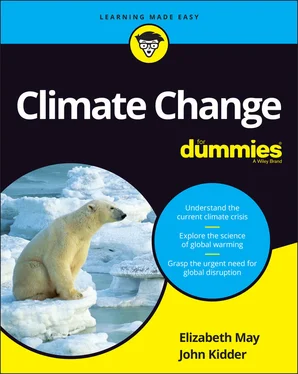
 Sinks normally absorb about half of human-caused emissions. So, if these sinks were to weaken, or even stop absorbing, they’d leave a lot more carbon dioxide in the atmosphere, on top of our already-increasing emissions.
Sinks normally absorb about half of human-caused emissions. So, if these sinks were to weaken, or even stop absorbing, they’d leave a lot more carbon dioxide in the atmosphere, on top of our already-increasing emissions. Measuring in carbon equivalents means, for example, that 1 unit of methane equals 21 units of carbon. In other words, 1 metric ton of methane is just as bad as 21 metric tons of carbon dioxide. Thus, methane is 21 carbon dioxide equivalents, or 21 metric tons of carbon dioxide.
Measuring in carbon equivalents means, for example, that 1 unit of methane equals 21 units of carbon. In other words, 1 metric ton of methane is just as bad as 21 metric tons of carbon dioxide. Thus, methane is 21 carbon dioxide equivalents, or 21 metric tons of carbon dioxide.